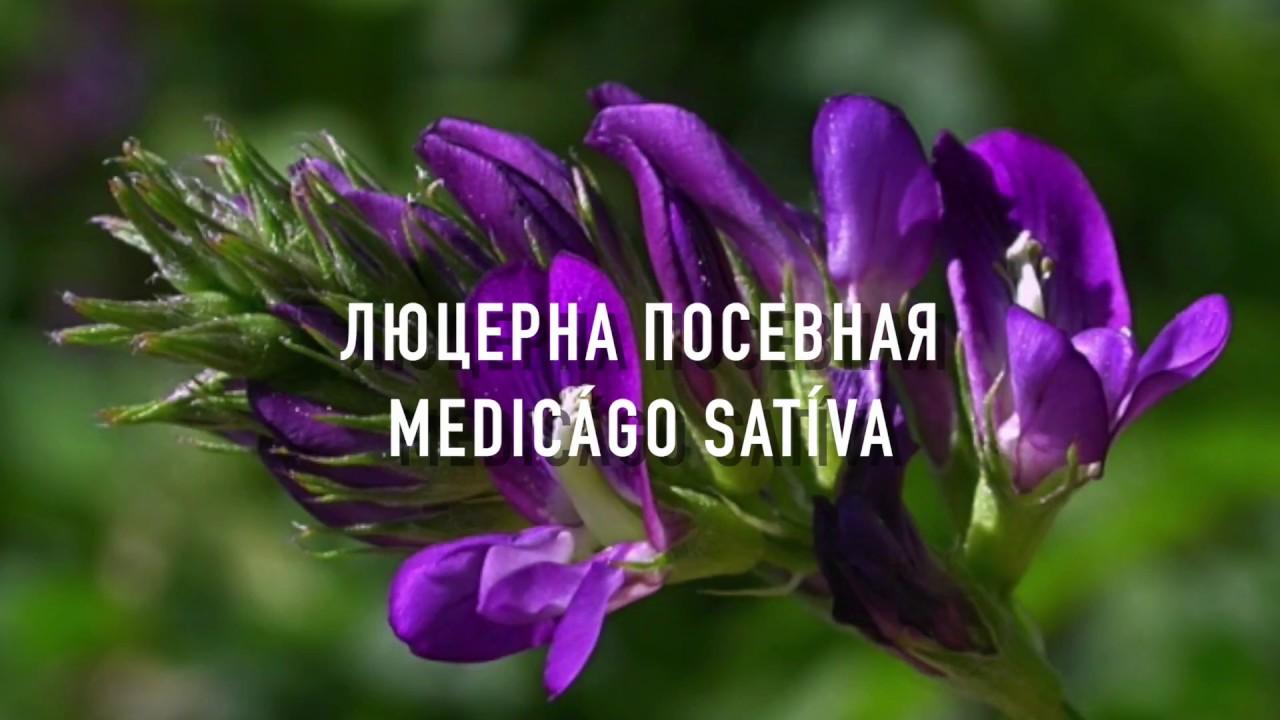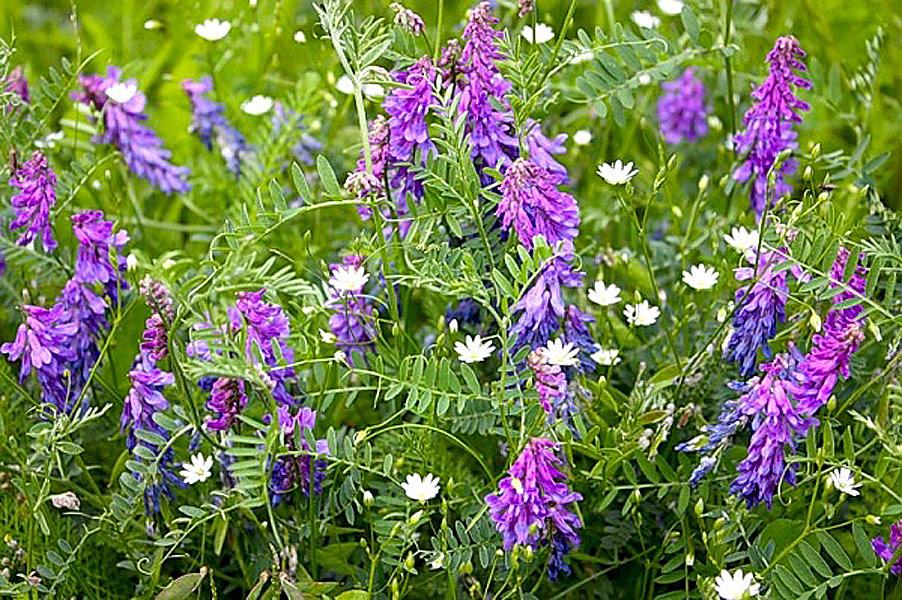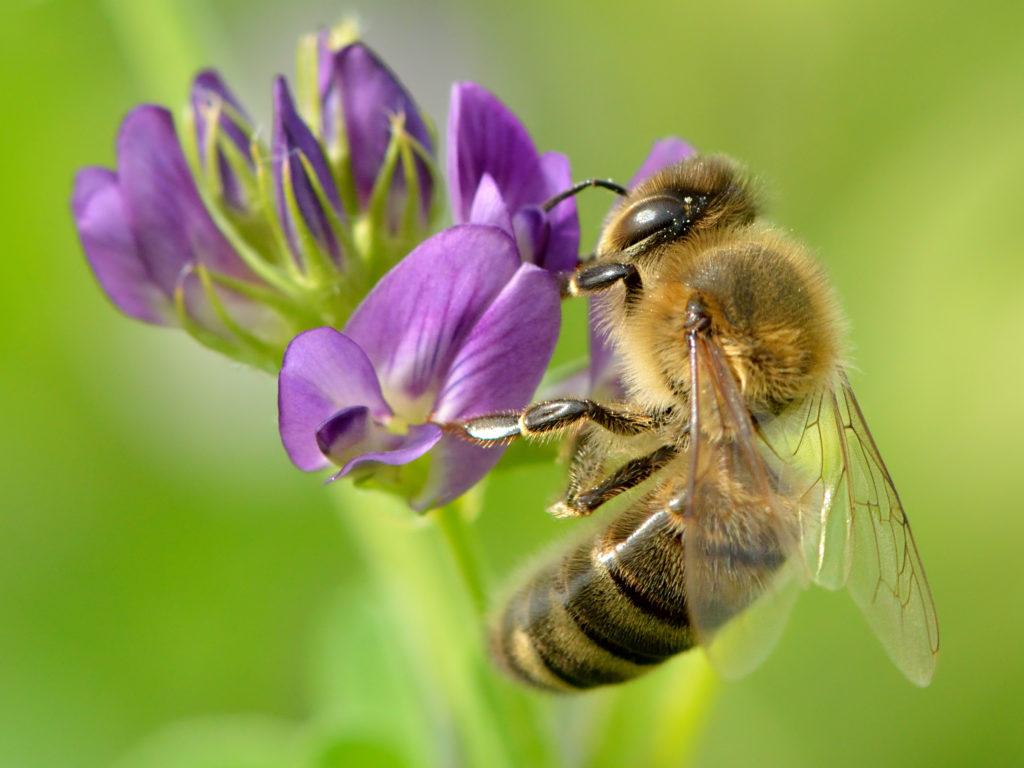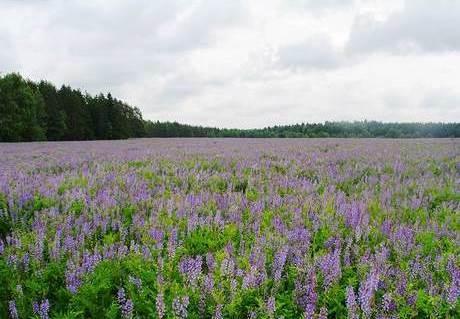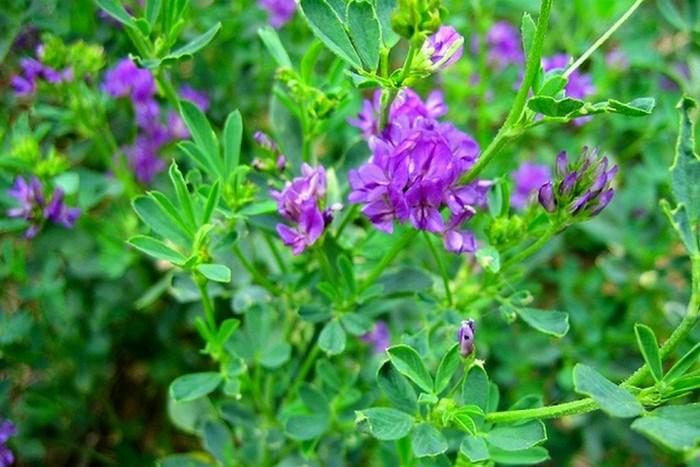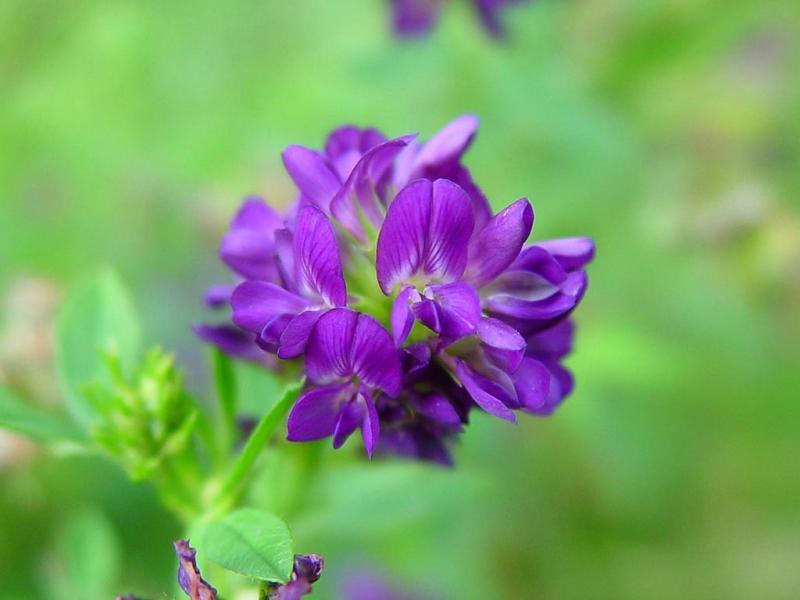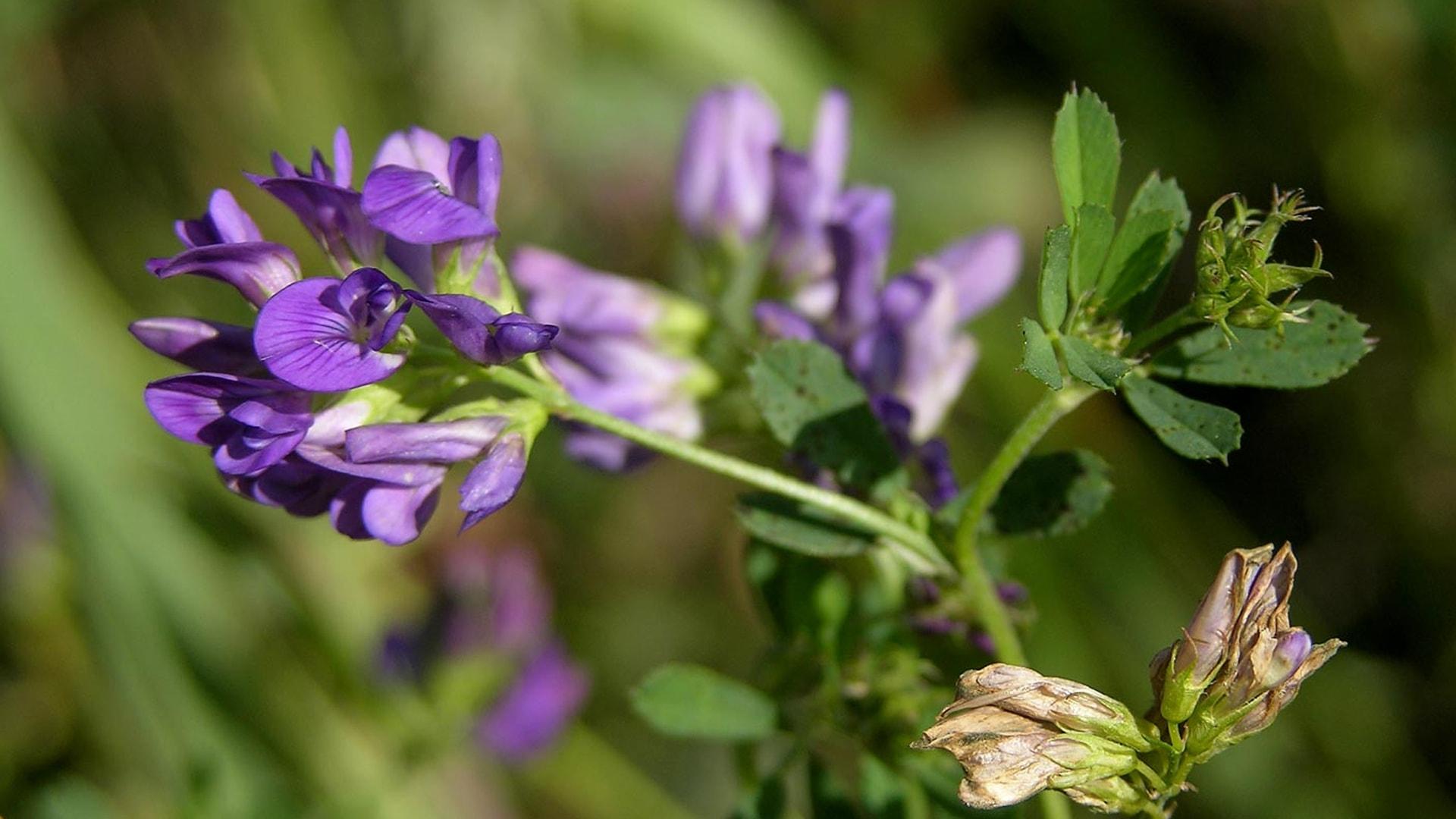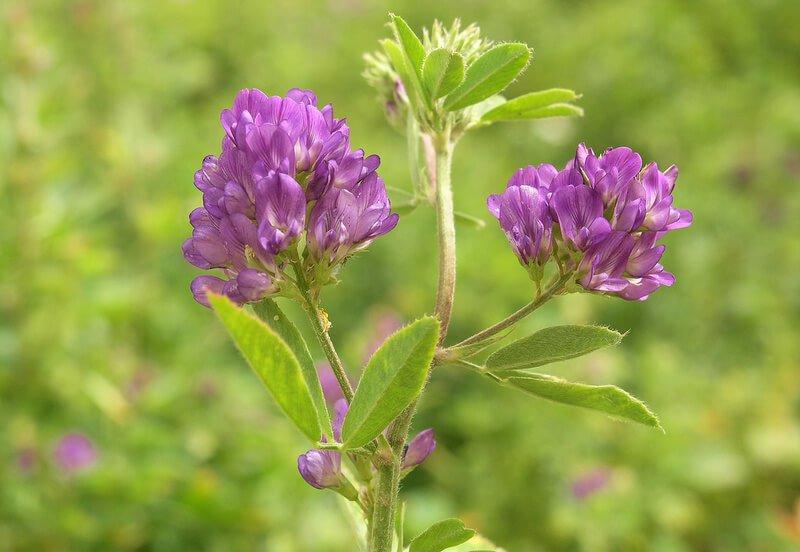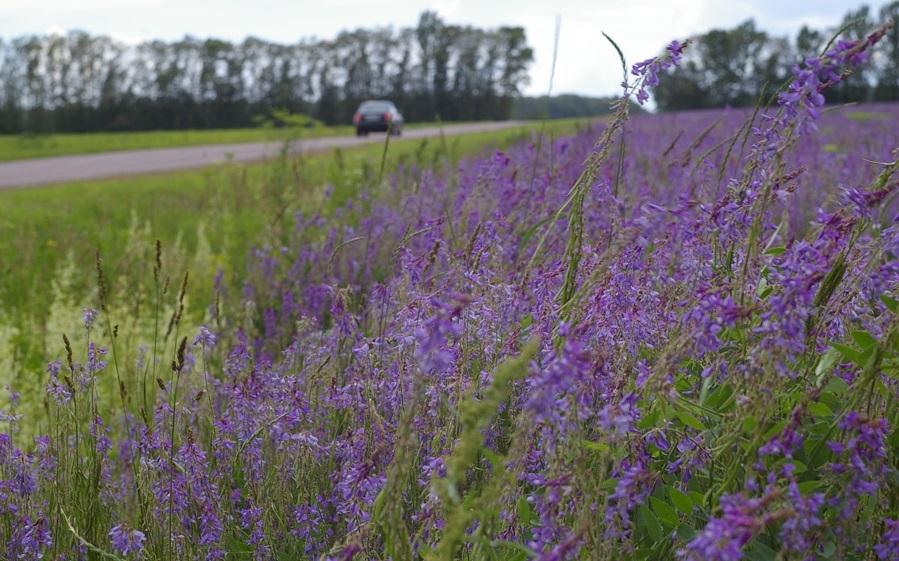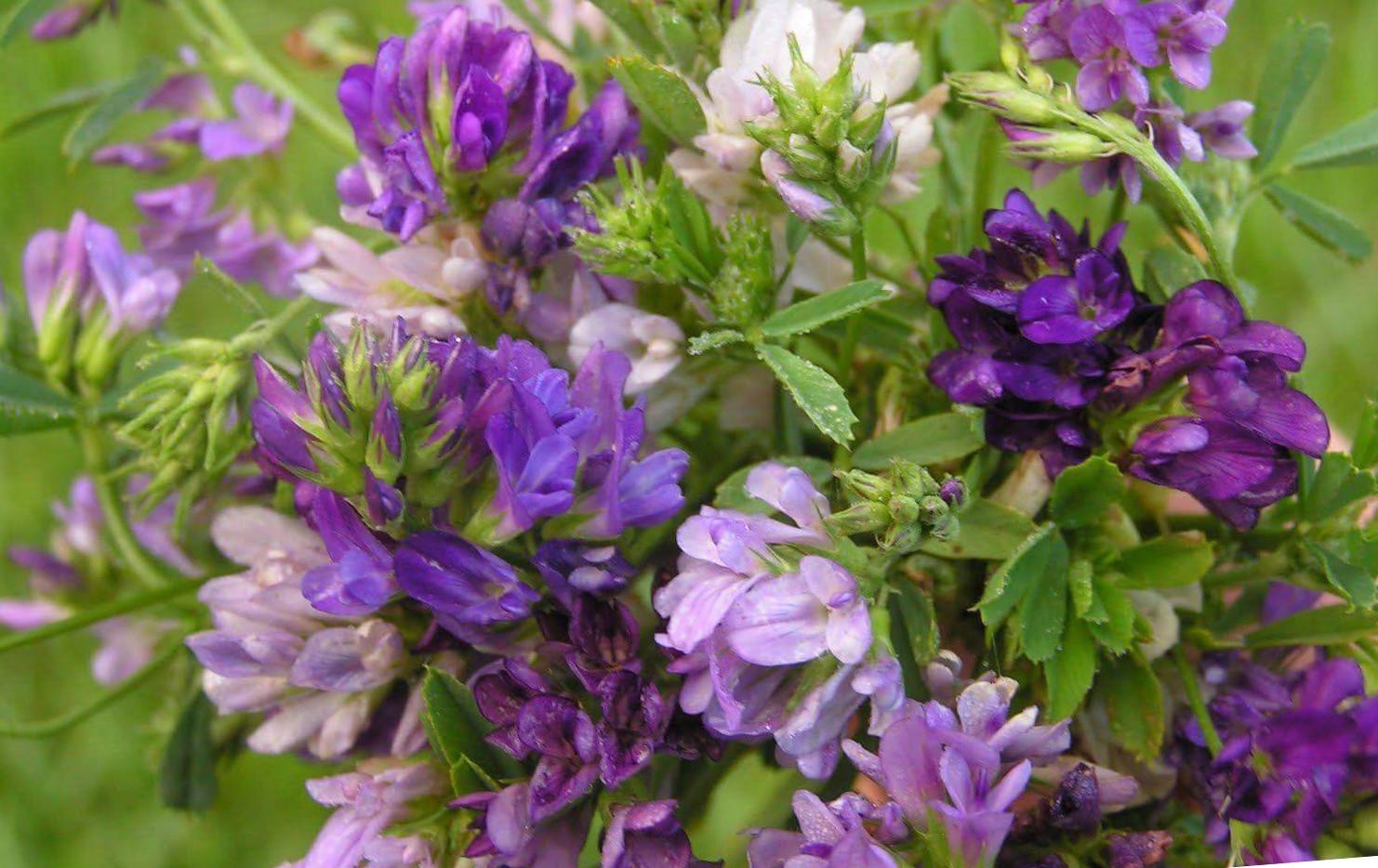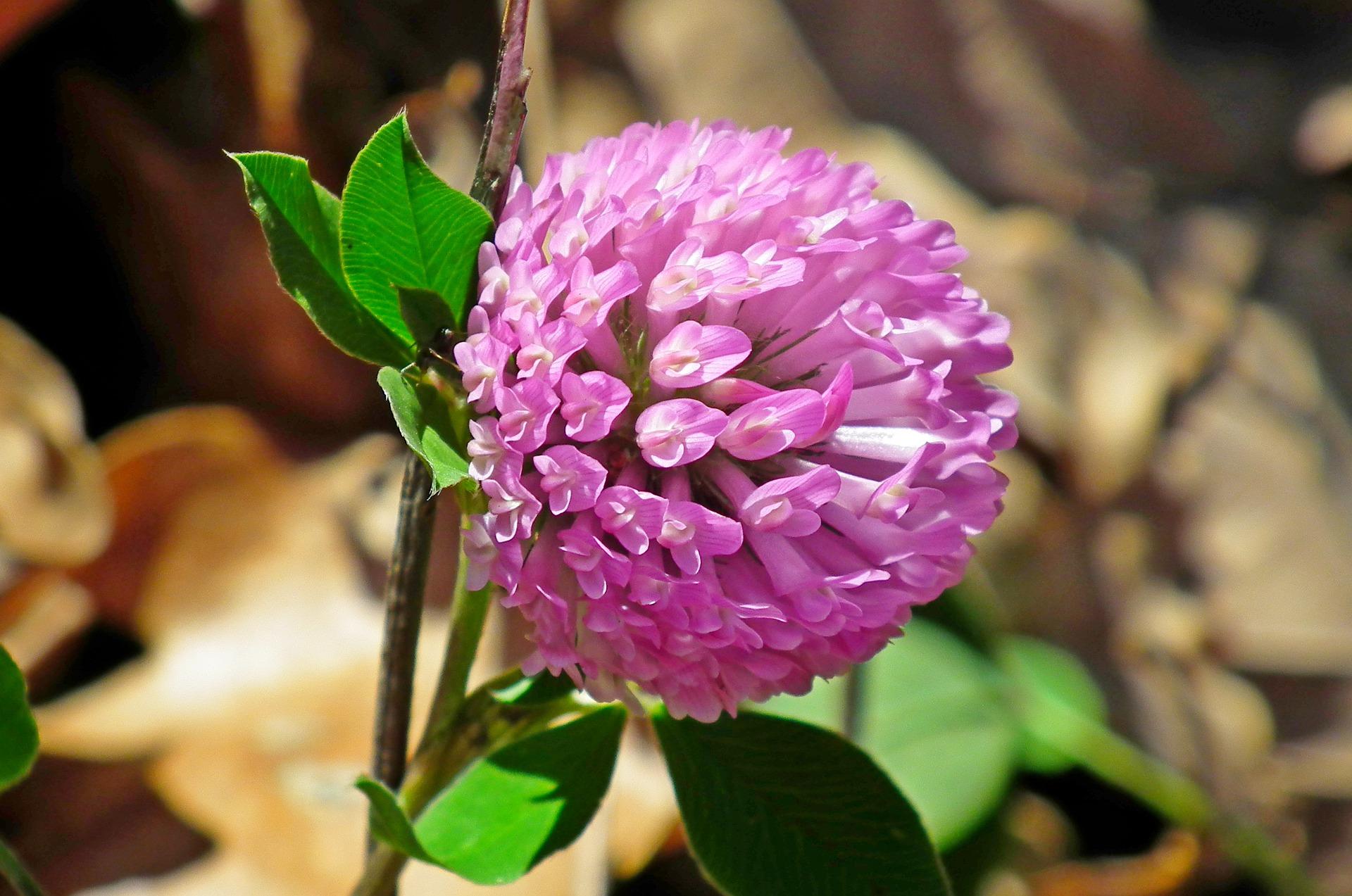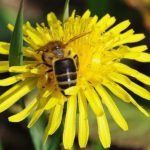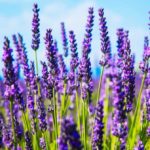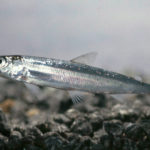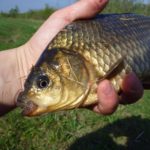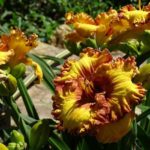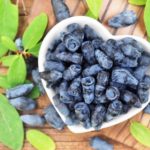Alfalfa fields in Russia are quite widespread. This plant is a valuable agricultural crop that is used to feed animals and solve many other problems. It is also in demand among beekeepers. The use of alfalfa as a honey plant for beekeeping is considered a very promising direction. This crop is highly productive and produces high-quality nectar.
Description of culture
Alfalfa is a perennial plant from the legume family.It is a fodder crop that is distinguished by its honey-bearing properties. In addition, the plant belongs to green manure.
The ground part reaches a height of 1 meter. In this case, the main root goes 4-10 meters. It extracts moisture and valuable elements from deep layers. Many additional roots extend from the main stem. They contain nodule bacteria that provide nitrogen fixation.
Alfalfa is a bush that has stems extending from the base. They have petioles with three leaves. They are complemented by jagged edges. During the flowering period, beautiful flowers appear on alfalfa, which include 12-13 buds. They may have a lilac or yellow color.
The inflorescences resemble a panicle in appearance. Each bud represents a separate honey plant. One crop can attract many bees. The flowers emit a warm and sweet scent.
Types of alfalfa
Of the 100 varieties of the crop, only two are used as a honey plant - sowing and yellow crescent.
Sowing
This plant has a bushy structure and a straight stem that reaches a height of 1 meter. Thin stems extend from it, on which there is a group of 3 dense leaves. The upper stems are complemented by flowers that are shaped like moth wings. After flowering is completed, fruits are formed on the bushes, which are beans twisted into a spiral.
The flowers have different shades - from soft lilac to bright purple. Alfalfa mainly grows in the south and central Russia.
The plant is considered very undemanding to sowing conditions. It can withstand even slight cold and moisture deficiency. The crop grows on poor soils.Moreover, it is characterized by a long root system, which in dry weather takes out moisture and saturates the area with nitrogen.
Flowering of this type of alfalfa continues throughout the summer from June.
The falling of the petals within 2 hours after the bee colony swoops in means that pollination has occurred.
The nectar is located quite deep. But southern bee breeds are characterized by long proboscis. Thanks to this, they easily extract the substance. During a good season, up to 100 kilograms of honey can be obtained from 1 hectare of plantings.
Yellow crescent
This type of alfalfa is decorated with showy yellow flowers. The second name of the variety is associated with the sickle-shaped structure of the leaves and flowers.
The plant reaches a height of 60 centimeters. It has a bushy structure and a main stem with shoots. The leaves have an elongated shape and form groups of 3 pieces. The flowers have different shades - from light yellow to brighter and more saturated. After flowering is completed, oval beans appear on the bushes.
At the same time, it is important to be able to attract them to the field with yellow alfalfa. To do this, you need to train the bee colony in advance. While still in the hive, it needs to be fed with sugar syrup infused with alfalfa.
The yellow variety of the crop begins to bloom in the first half of summer. It reaches its peak in the second half of summer. It lasts from early July to August. During the season, bees pollinate the bushes 2 times. At the same time, wild insects fly up to every second flower and collect pollen.
This shrub is unpretentious to growing conditions. It easily withstands cool weather and short frosts.At the same time, alfalfa produces more nectar at temperatures of +26-30 degrees and moderate humidity. In good weather, 1 hectare can produce up to 300 kilograms of honey over the summer.
Growing
Both varieties of alfalfa are considered unpretentious in terms of soil type, but are very demanding in terms of weather. The best soil option is sandy. Moreover, it must have a low level of acidity. Fairly fertile soil suits the plant best.
Alfalfa should be planted in an open meadow or field. This is recommended to be done in early spring. It is important to take into account the forecast summer weather. Flowering should occur during a season with clear and cloudless weather. 10-15 kilograms of seeds are required per 1 hectare.
It is recommended to first clear the area of weeds and roots of mown plants. It is also worth removing debris and stones. Then you need to dig up the soil and break up large lumps. After this, the field needs to be leveled with a rake or agricultural machinery.
The sowing depth of bushes is 1-1.5 centimeters. Seeds should be sown 3 centimeters deep in sandy soil. It is recommended to wrap the soil on top so that precipitation does not wash away and swell the seeds. For more uniform placement, alfalfa should be mixed with sand.
Seeds must be planted manually or by machine. In the second case, the consumption of planting material is much less. Sprouts appear 5-7 days after planting. At the beginning of summer, the flowering period begins. Nectar acquires sweetness at 13-16 hours. In the morning and evening the amount of glucose decreases.
Honey productivity of the plant
Flowering of the seed variety is observed only once in the first year of life. In the next 2 years it is more abundant.The timing of flowering is determined by the time of mowing the grass. If the field remains unmown, in the first half of summer the plant blooms for more than 1 month.
Within 1 day, a bee colony can collect approximately 10 kilograms of nectar. At the same time, 100 kilograms of honey can be obtained from 1 hectare of irrigated field. It has a transparent structure and an amber tint. The product is characterized by a mild taste with no bitterness.
Flowering of sickle alfalfa begins in the first half of summer and lasts until mid-autumn. The time of cutting affects the intensity of this process. From 1 hectare it is possible to obtain up to 300 kilograms of bee nectar. Sickle alfalfa produces a light amber honey that has a delicate flavor. A distinctive feature of the product is its rapid crystallization.
Flowering period and duration
Alfalfa flowering depends on the variety. The crescent variety begins to bloom in the first half of summer. This process continues until mid-autumn. The sown variety of the crop also blooms in early summer. This lasts more than 1 month.
Medicinal properties
Alfalfa honey contains many valuable components. It is recommended to be used in the following cases:
- acute respiratory viral infections - the product strengthens the immune system and increases the body's resistance;
- burns and minor injuries – honey accelerates skin regeneration and stops inflammation;
- pathologies of bile-forming organs - the composition activates bile synthesis and improves digestive functions;
- diseases of the digestive organs - the substance is perfectly absorbed in the stomach;
- pathologies of the heart and blood vessels - the product helps to avoid the development of stroke and heart attack, and is also useful for varicose veins.
Alfalfa is considered an excellent honey plant, which allows you to obtain high-quality bee nectar. It contains many valuable components and brings great health benefits.


